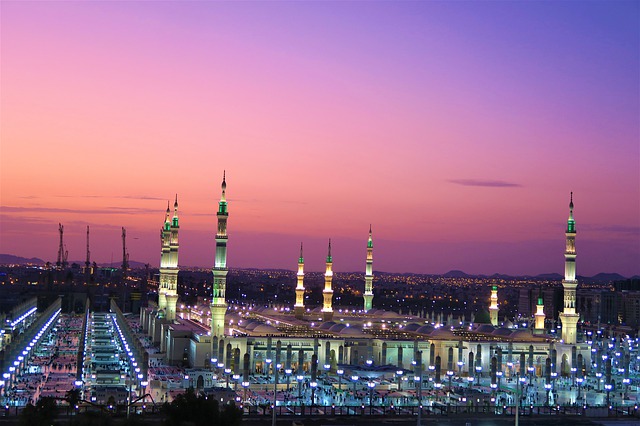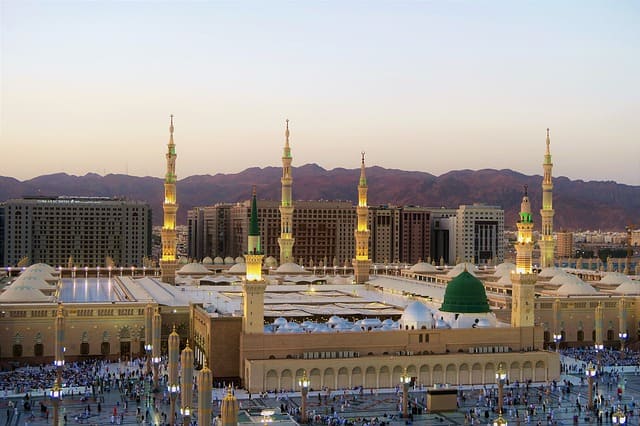The Mecca and Medina are spiritual capitals of the Islamic world and these two holy cities have to deal with strong urbanization pressure due to the rapid growth of their population. Their respective populations are expected to double over the next 30 years, with an increasing number of visitors. The challenge is to deal with aging infrastructure, limited available land areas and sensitive design elements.
A 30-year plan for infrastructure, transportation, community facilities and land use planning has been developed. Similarly, the GIS system has been used to recreate the existing conditions of the city, as well as those that will prevail for periods of five years, over the next 30 years.
You can know more information about pilgrimage here
What is Medina?
Mecca receives millions of Muslim pilgrims every year as part of the sacred journeys known as Hajj and Umrah, which constitute one of the fundamental pillars of Islam. Pilgrims represent the bulk of the 20 million foreign visitors who arrive in Saudi Arabia every year, according to the media.
Saudi authorities believe that the modernization of transport lines between the holy cities of Mecca and Medina will increase tourism revenues in the country, which seeks to reduce its dependence on oil exports, says The Guardian.
Saudi Arabia is also investing in the construction of hotels and the restoration of the Great Mosque in Mecca.
Medina (/ mədiːnə / Arabic: المدينة المنورة, al-Madīnah al-Munawwarah, “the radiant city”, or المدينة, al-Madīnah (hejazi pronunciation: [almadiːna]), “the city”), also translated to Madahina, is a city in the Hejaz region in the Arabian Peninsula and the administrative headquarters of the Al-Madinah region in Saudi Arabia. Al-Masjid an-Nabawi (“The Prophet’s Mosque”) is in the heart of the city.
It is the burial place of the Islamic prophet Muhammad and the second holiest city in Islam after Mecca. Medina was the destiny of Muhammad (saw) for his Hijrah (migration) from Mecca and became the capital of a rapidly expanding Muslim empire under the leadership of Muhammad.
It served as the power base for Islam during its first century, when the first Muslim community developed. Medina is home to the three oldest mosques, namely the Quba Mosque, al-Masjid an-Nabawi and the Masjid al-Qiblatayn (“the mosque of the two Qiblas”).
Muslims believe that the chronologically definitive suras of the Koran have been revealed to Muhammad in Medina and are called Medina Suras as opposed to the previous suras of Meccan.
Like Mecca, the center of the city of Medina is closed to anyone considered non-Muslim, including members of the Ahmadiyya movement, by the national government. However, other parts of the city are not closed.
What is its importance for believers?
Medina has a great religious significance in Islam in it lies the body of Muhammad (saw) in the green dome of the Prophet’s mosque. The importance of Medina as a religious site comes from the presence of al-Masjid an-Nabawi. The Umayyad caliph Al-Walid I expanded the mosque. Mount Uhud is a mountain north of Medina, the site of the second battle between Muslim and Mecca forces.
The first mosque built at the time of Muhammad is also in Medina, known as the Quba Mosque. It was destroyed by lightning, probably around 850 AD, and the graves were almost forgotten. In 892, the place was cleared, the graves were located and a beautiful mosque was destroyed, which was razed by a fire in 1257 CE and rebuilt almost immediately. It was restored by Qaitbay, the Egyptian ruler, in 1487.
The Al-Qiblatain Mosque is another historically important mosque for Muslims. It was there that the order was sent to Muhammad to change the orientation of the prayer (qibla) from Jerusalem to Mecca, according to a hadith.
Like Mecca, the city of Medina only allows Muslims to enter, although the haram (non-Muslim area) is much smaller than Mecca, so many facilities on the outskirts of Medina are open to non-Muslims. While in Mecca, the area closed to non-Muslims extends well beyond the limits of agglomeration. The numerous mosques of the two cities are the destination of a large number of Muslims in their omra (second pilgrimage after the pilgrimage). Every year, hundreds of thousands of Muslims travel to Medina to make their pilgrimage to the Hajj. Al-Baqi, meanwhile, is an important cemetery in the medina where several members of Muhammad’s family, caliphs and scholars are buried.
Where is Medina located?
Medina is located in Saudi Arabia (Al Madīnah al Munawwarah) in the Asia / Riyadh time zone. Nearby are Sulţānah, Badr Ḩunayn and Yanbu. Medina, formerly Yathrib, is a city in Saudi Arabia, capital of the province of Medina, located in the Hejaz.
In this city the prophet of Islam, Muhammad, was established in 622 in the Hegira, after, according to the Qur’an, he received God’s order to leave Mecca, a city more than 430 km away. This city is also where he died and was buried in 632. The city houses his grave in the Prophet’s Mosque, as well as the first caliphs Abu Bakr and Omar, the other important people of Islam who remain in the Al-Baqi cemetery.
Medina is considered the second sacred city of Islam, after Mecca. Although it is not a mandatory Hajj pass, pilgrims who come from Mecca enter to pray in the city, as many faithful do throughout the year, to the tomb of Muhammad and also make visits to mosques.
His Relationship with Mecca
Islamic scriptures emphasize the holiness of Medina. The medina is mentioned several times as sacred in the Quran, for example, ayah. Medina Surahs are generally longer than their counterparts in Mecca. There is also a book in Bukhari’s hadith entitled “The virtues of the medina.”
The Prophets consider Medina a sanctuary, their trees should not be cut and should not be innovated because according to them a heresy would be committed, no sin should be committed, and whoever breaks a heresy or commits sins (bad actions), then will incur the curse of God, angels and all people.
Upon the arrival of the Prophet Muhammad and his companions during the Hégira of 622, the oasis of Iâthrib becomes a city in its own right, named in honor of Muhammad, the “city of the Prophet”, “madînat al -nabi”. Founded politically by the so-called Yathrib Pact, also known as the Medina Constitution, the city becomes the site of the first Muslim community.
Its opposition to Mecca between 622 and 629 leads it to develop widely, in all planes. Therefore, an important architectural development is added to its political importance, and the city continues to be embellished under the first four caliphs.
Its character as a sacred place is especially emphasized after the death of the Prophet, which occurred in 632. In the years after the defeat of Meccan, and until the final victory of the Meccan clan of the Umayyads in 661, Medina is the center of the empire nascent of Islam and the seat of political and religious authority.
After the displacement of the capital in Damascus, Medina loses all its political aura, but it is the second sacred place of Islam, a pilgrimage center that together with the Mecca are the Sacred Places of Saudi Arabia, whose successive powers Sultanian and Caliphal are proclaimed guardians, but it will not become a true political commitment until the 18th century, with the appearance of Wahhabism in Arabia.


